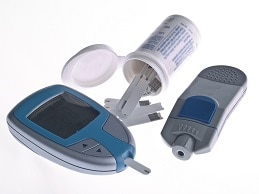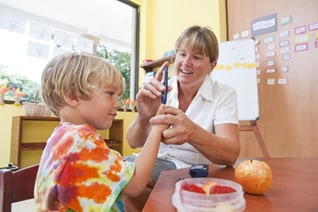Diabetes

Ensuring that students with diabetes have the health services they need in school is important in helping them stay healthy and ready to learn. Managing diabetes at school is most effective when there is a partnership among students, parents, school nurses, health care providers, teachers, counselors, coaches, transportation staff, food service employees, and administrators. Support may include helping a student take medications, check blood sugar levels, choose healthy foods in the cafeteria, and be physically active.

Diabetes doesn’t have to get in the way of a good experience at school. Remember, parents and schools have the same goal: to ensure that students with diabetes are safe and that they’re able to learn in a supportive environment. Schools can:
- Develop a plan to help students care for diabetes and handle any diabetes-related emergencies, including updated physician and emergency contacts.
- Work with a student’s parents, doctor, and school staff to create a Diabetes Medical Management Plan including information on services the school will provide and how to recognize high and low blood sugar levels. For more information, visit Helping the Student with Diabetes Succeed: A Guide for School Personnel, which includes hypoglycemia and hyperglycemia emergency care plans
- Ensure that school staff have a glucagon emergency kit and know how to use it if a student experiences a low blood sugar emergency.
Help students to manage diabetes at a level right for his or her age.

- If a child is going to monitor his or her blood sugar, ensure that he or she feels comfortable doing so.
- If a trained school employee will do the monitoring, be sure the student knows where and when to go for testing.
- Encourage students to eat healthy foods, including a healthy breakfast, which will help students stay focused and active. Students and parents should look at the school menus together to help them make choices for a healthy meal plan.
- Having diabetes doesn’t mean that a child can’t be physically active or participate in physical education classes. They should get at least 60 minutes of physical activity every day. In fact, being active can help a child improve his or her blood sugar control.
- Check that students with diabetes have all recommended vaccinations, including the flu shot. If a child with diabetes gets sick, he or she can take longer to recover than children without diabetes. Talk to the student’s parents to make sure their child has all the vaccinations they need before starting the school year.
- Encourage students to wash their hands regularly, especially before eating and after using the bathroom.

